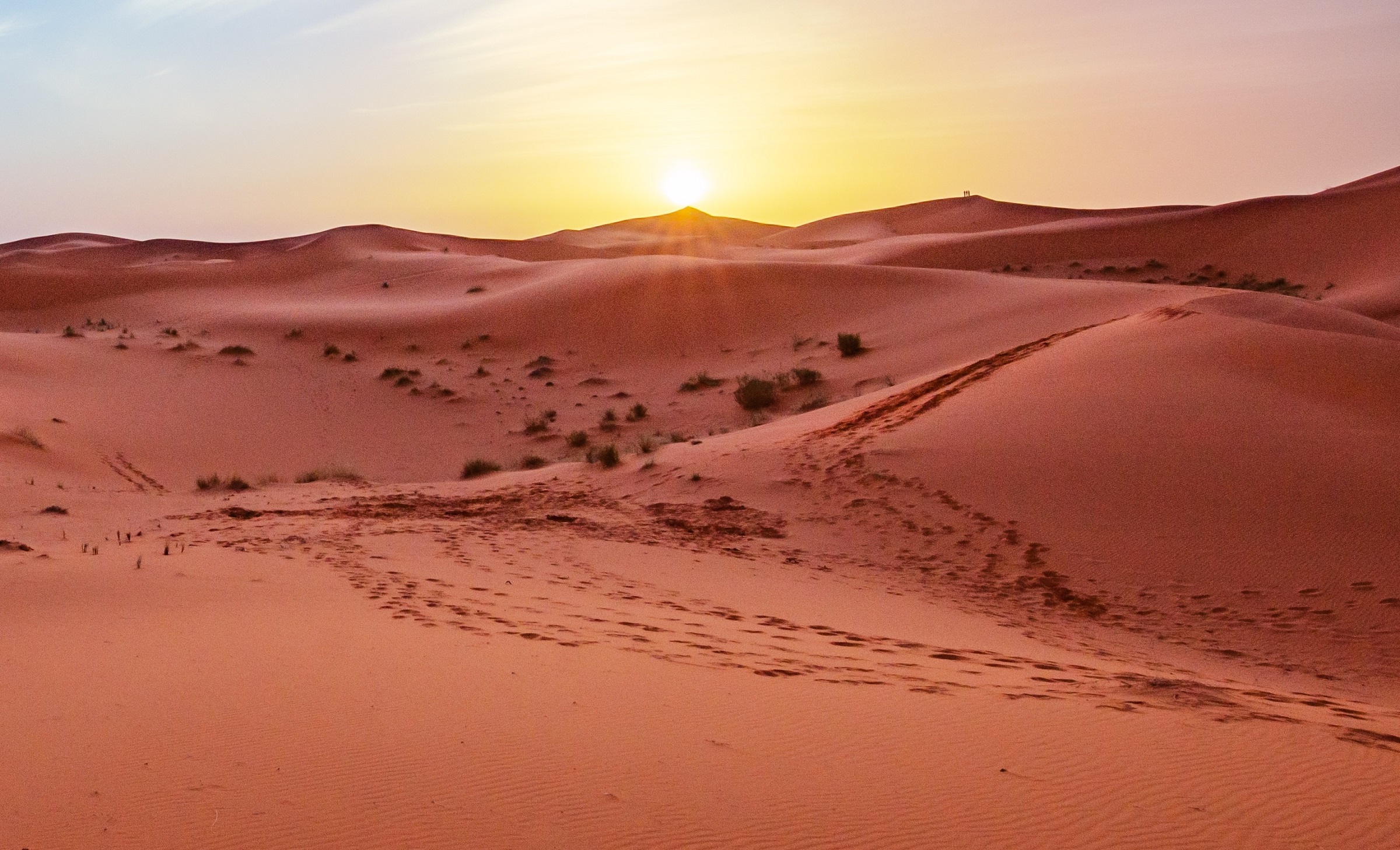Top 10 Biggest, Deadliest and most Dangerous Deserts in America
Large stretches of parched terrain that span several different parts of the country are known as America’s deserts. Every desert, from the recognizable Mojave dunes to the untamed Sonoran gorges, has its own distinct qualities and charm. This is a thorough examination of the ten biggest American deserts:
1. Great Basin Desert
The Great Basin Desert is one of the biggest in the country, spanning portions of Nevada, Utah, Oregon, and Idaho. Stretching across an area of around 190,000 square miles, it is distinguished by plains blanketed in sagebrush, untamed mountain ranges, and an abundance of alkali flats. The severe temperature swings of the Great Basin Desert, with its blistering summers and extremely freezing winters, are well-known. The desert is home to a wide variety of plant and animal species that have adapted to its dry climate, despite its severe surroundings.
2. Chihuahuan Desert
The largest desert in North America is the Chihuahuan Desert, which stretches across portions of Texas, New Mexico, Arizona, and Mexico. Its extensive stretches of arid grasslands, rocky mountains, and shrubland define its roughly 175,000 square mile area. With a wide variety of plant and animal species that have adapted to the severe climate, the Chihuahuan Desert is renowned for its great biodiversity. The Guadalupe Mountains and the Chihuahuan Desert Basin are two of its distinctive geological characteristics.
3. Sonoran Desert
The Sonoran Desert, which spans portions of Arizona, California, and northern Mexico, is well known for its breathtaking scenery and unusual wildlife. With an area of almost 100,000 square miles, it is distinguished by tall mountains, a variety of habitats, and the distinctive saguaro cactus. With its hot summers and moderate winters, the Sonoran Desert is well-known for its harsh weather. The desert is home to a wide range of plant and animal species, including desert-adapted ones like the desert tortoise and Gila monster, despite its dry climate.
4. Mojave Desert
Being one of the driest deserts in North America, the Mojave Desert stretches across portions of Arizona, Nevada, Utah, and California. Stretching across an area of approximately 47,877 square miles, it is distinguished by its expansive sand dunes, rough terrain, and distinctive Joshua tree forests. The Mojave Desert is well-known for its extremely high summer temperatures and bitterly cold winters. Roadrunners, coyotes, and desert bighorn sheep are just a few of the many plant and animal species that call the desert home, despite its harsh environment.
5. Colorado Plateau Desert
The Colorado Plateau Desert, which spans parts of Arizona, Utah, Colorado, and New Mexico, is renowned for its breathtaking geological formations and vibrant scenery. Stretching across an area of roughly 40,000 square miles, it is distinguished by its expansive desert panoramas, deep valleys, and tall mesas. Numerous well-known national parks, such as Zion National Park, Bryce Canyon, and the Grand Canyon, are located on the Colorado Plateau Desert. Along with being rich in Native American history and culture, the area is home to a large number of archeological sites.
6. Great Salt Lake Desert
One of the biggest salt flats in the country is the Great Salt Lake Desert, which is situated in western Utah. With an area of almost 7,000 square miles, it is distinguished by its huge salt crusts and bleak, white terrain. Extreme temperatures and dry, barren conditions with little to no flora or wildlife are characteristics of the Great Salt Lake Desert. The desert is home to a number of unusual species that have adapted to its saline soils despite its severe environment, such as brine shrimp and alkali flies.
7. Sevier Desert
The Sevier Desert, a large, dry area with rocky terrain and little flora, is located in western Utah. With a land area of about 5,000 square miles, it is renowned for its severe weather patterns. The Sevier Lake and the Fish Springs National Wildlife Refuge are two of the distinctive geological features found in the Sevier Desert. The desert is home to a wide range of plant and animal species, including pronghorn antelope, juniper trees, and sagebrush, despite its dry climate
8. Black Rock Desert
The Black Rock Desert, a remote and bleak area of northwest Nevada, is well-known for its vast playa and arid surroundings. It is well-known for holding the yearly Burning Man festival, which draws thousands of people to the area to create art installations and celebrate artistic expression. The festival spans around 1,000 square miles. The Black Rock Desert is known for its harsh weather, with sweltering summers and icy winters, as well as its level, featureless surface.
9. Carson Desert
The Carson Desert, which is in western Nevada, is a sparsely populated area distinguished by its harsh terrain and dry, arid environment. Its sagebrush-covered slopes, dispersed mountain ranges, and desolate plains make up its about 950 square mile area. A multitude of plant and animal species that have adapted to the harsh environment of the Carson Desert can be found there, along with a number of tiny towns and communities.
10. Tonopah Desert
The Tonopah Desert is a remote and bleak area in central Nevada that is well-known for its bleak scenery and rough topography. Its craggy hills, limited flora, and desolate plains make up its about 650 square mile area. Numerous ghost towns and abandoned mining towns, remnants of the area’s mining past, can be found in the Tonopah Desert. The desert is home to a wide range of animals, including jackrabbits, coyotes, and desert bighorn sheep, despite its severe environment.
Summary
These ten American deserts are some of the biggest and most recognizable in the world, and they each present different options for exploration as well as their own special beauty and difficulties. These deserts, which range in size from the enormous salt flats of the Great Salt Lake Desert to the majestic peaks of the Rocky Mountains, are evidence of the variety and adaptability of life in arid climates.
